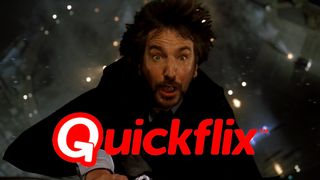Can Quickflix bounce back from voluntary administration?
Quickflix CEO says 'yes'

Earlier this week, we brought you the news that Quickflix, Australia's original movie streaming service, had entered into voluntary administration.
Though the news was hardly surprising, Quickflix CEO Stephen Langsford believes that the company’s restructure will enable it to come back stronger than ever.
In an official statement issued today, Langsford pointed to the service’s recent addition of Star Wars: The Force Awakens as “the most streamed movie in the company’s history,” also noting that “more than 2,200 new subscribers had been added in the past week alone.”
While it’s good to see the flagging service’s founder confident in the company’s future (ignoring the probability of the aforementioned new subscribers still being within their two week trial period), it’s hard to share his enthusiasm.
Langsford places the blame squarely on the shoulders of streaming service Stan, stating that the rival purposely tanked attempts to negotiate over $11.7 million in redeemable preference shares (RPS) from HBO.
“We had discussions regarding restructuring the RPS in a way that would allow us to raise new capital and grow the business, but it became clear that Stan had a different agenda, and was primarily driven by the goal of gaining our member base and removing us as a competitor,” said Langsford.
Sub-Stan-dard service
While that may or may not be the case, I’d argue that Quickflix’s streaming service had been lagging behind the curve since long before Stan entered the picture – there’s a reason an estimated 200,000 Australians went to the trouble of using geo-relocation tools to access U.S. Netflix before it had launched here over simply signing up to the local equivalent.
Get daily insight, inspiration and deals in your inbox
Get the hottest deals available in your inbox plus news, reviews, opinion, analysis and more from the TechRadar team.
For starters, it took Quickflix way too long to introduce high-definition streams. It seems absurd to me that Australians had been accessing HD streams from overseas for years before Quickflix got around to it.
And, to this day, Quickflix is cagey about the actual quality of its streams. In its Help Centre entry on picture quality, Quickflix states that “on most devices under normal conditions, the picture quality on Quickflix content is as good as free to air TV (in Standard Definition or High Definition).”
This is as bafflingly vague an answer as you can get, especially when you consider that 576p is what passes for HD on almost every free to air channel.
Compare this to rivals Netflix and Stan – not only are they upfront about their exact resolutions, Netflix continues to push the envelope in picture quality, launching in Australia with 4K streaming capability, having also recently added HDR content to its growing list of bullet points.
Then there’s Quickflix’s muddled subscription system which offers SVOD content alongside traditional movie rental streams from $5.99 per film. Adding to the confusion is a $5 Premium Pass subscription which gives you 1x premium movie rental per month (and discounts for any other movies you choose to rent during that period).
It’s absurdly complicated, and there’s no doubt that this split focus is part of the reason that Quickflix has failed to innovate over the years.
Mail-order business plan
While Quickflix continues to spruik outdated DVD mailouts and movie rentals, its competitors are off producing their own exclusive, original content (yes, even Presto), which makes them a much more attractive proposition for potential subscribers.
As for the service’s current plans for the future, Langsford’s statement revealed that “Quickflix management are planning on submitting a Deed of Company Arrangement (DOCA) to the Administrators that will allow the balance sheet to be restructured, new capital to be raised and will reposition the company as a broader based digital consumer, ecommerce and entertainment player.”
This all sounds good, but barring a complete and absolute reboot of the entire service from the ground up, it seems to me that Quickflix is going to have a difficult time regaining relevance in a post-Netflix world, especially after having dropped the ball for such a long time.

Stephen primarily covers phones and entertainment for TechRadar's Australian team, and has written professionally across the categories of tech, film, television and gaming in both print and online for over a decade. He's obsessed with smartphones, televisions, consoles and gaming PCs, and has a deep-seated desire to consume all forms of media at the highest quality possible.
He's also likely to talk a person’s ear off at the mere mention of Android, cats, retro sneaker releases, travelling and physical media, such as vinyl and boutique Blu-ray releases. Right now, he's most excited about QD-OLED technology, The Batman and Hellblade 2: Senua's Saga.
